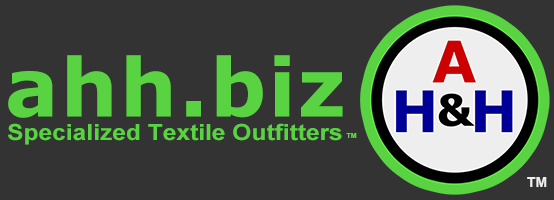Webbing> Common Webbing Usage Information






This Website works best with ![]() Chrome Web Browser
Chrome Web Browser
There are many common uses for webbing and strap materials.
Nylon Webbing is the most commonly heard of type of webbing, but it is not the only type of webbing available today. Polypropylene, often shortened to "Polypro webbing" is less expensive than Nylonand is available in more colors. Due to the nature of Polypropylene fiber, Polypropylene webbing does not absorb fluids as readily as Nylon Webbing or Polyester Webbing.
Cotton, believe it or not is still widely used in apparel and home furnishings because of Cotton fiber's soft, non-abrasive properties. You can find cotton webbing belts and straps in many places and industries also. Before the advent of synthetic fire resistant webbing; cotton webbing was used in the fire service and other services where exposure to fire was likely. Unlike it's synthetic counterparts, Cotton Webbing does not melt, so when burned, it does not drip molten material on a user's skin causing addition injuries.
Nylon Webbing, is stronger than Cotton Webbing and has much more durability. Nylon Webbing is not susceptible to organic discomposure to any degree similar to Cotton Webbing. Nylon webbing has become almost a direct replacement for cotton webbing in the past 60 years or so. Polyester Webbing is often mistaken for Nylon Webbing, but Polyester is a distinct separate fiber than Nylon and has a different set of chemicals and solutions that it is resistant to.
Most dog and pet collars are fabricated from a Heavy Nylon Webbing, because unlike Polyester webbing it is less absorbent of organic material, mold and mildew therefore does not actively support the growth of these organisms like Polyester webbing does. Nylon Webbing, because of it's strength is also used in horse and equestrian accessories like halters and leads. All of the different types of webbing can be sewn with Heavy Duty Nylon Thread.
Most uses for webbing include straps. The most common hardware used on webbing straps are buckles. The side release buckle is one of the more modern of the buckles and is almost always used on non-leather straps. Leather straps do have a more rugged feel to them but many times they can not compare in strength and weight to synthetic webbing straps.
The variety of hardware and fittings for webbing straps is staggering. Many types of strap adjusters, buckles and clips are available.
The most common sizes for webbing in the United States are: 1 inch, 1 1/2 inch and 2 inch. 3 inch webbing is not as common as 2 inch and there is not much hardware available for 3 inch webbing. Also, sizes smaller than 3/4 inch webbing, don't have a lot of hardware choices either.
Flat elastic is also a type of webbing, it is woven or knitted with rubber fibers in such a way that it stretches and returns to shape. There are many uses for Elastic webbing straps, used very often with items that must be strapped to the body and must flex to some degree to avoid loosening due to the natural change in size or shape of a living being.